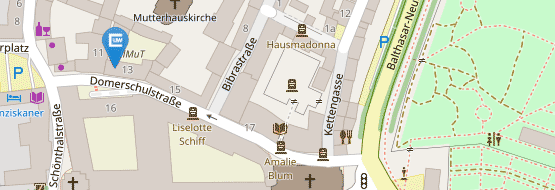Station IV: Bulls, Monkeys, Bears, Donkeys, Jackals...

Music-making animals are a widespread topos in West Asian iconography as early as the 3rd millennium BCE. Here we find donkeys playing harps or polecats drumming. Such scenes, mostly conceived in mythology or fables, differ in turn from pictures and figures showing monkeys playing flutes or dancing bears, which could very well be found in reality.
Monkeys are often documented as companions of musicians. They preferred to play wind instruments, probably mainly in show business. A Sumerian proverb says: „An untalented musician plays the shawm“. In contrast to stringed instruments, wind instruments in Mesopotamia were considered simple sound tools that could be learned by unprofessional showmen, street musicians, and even monkeys.
Most of the magnificent and ornate lyres recovered from the famous royal tombs of Ur had plaques of ivory and shell attached to their fronts, containing up to four pictorial registers or scenes. Depicted are mostly scenes from mythical and border worlds, showing hybrid beings that are half animal, half human, positioned in mirror images, or performing important religious acts, such as the making of offerings. This lyre front, which belonged to the largest of the lyres found at Ur, remains unique, as it is the only one that shows the use of the instrument itself within an ensemble. Remarkably, the instruments in this scene are played by animals. Since the lyre itself was considered holy and divine, nothing human could be part of its decoration. The top register depicts the famous image human-hero, typically defeating human-headed bulls. The human-headed bulls are usually connected with the sphere of the heavenly sun, especially the realm the sun rising on the horizon. Again the scorpion man in the lowest scene symbolizes the transitional space between the human realm and the underworld. The musical ensemble at the middle consists of a lyre-playing donkey, a jackal or mongoose with a drum and sistrum, and a dancing or clapping bear. In the earthly human realm, appropriate human ensembles are known to have accompanied cultic performance with the aim of appeasing and pleasing the gods. The scene thus again represents a transitional space and reveals music as a heavenly and divine tool of communication. Especially impressive is the precision of the depiction. Tuning rods, the course of the strings over a bridge, as well as the sound hole on the bull lyre are depicted in great detail.








